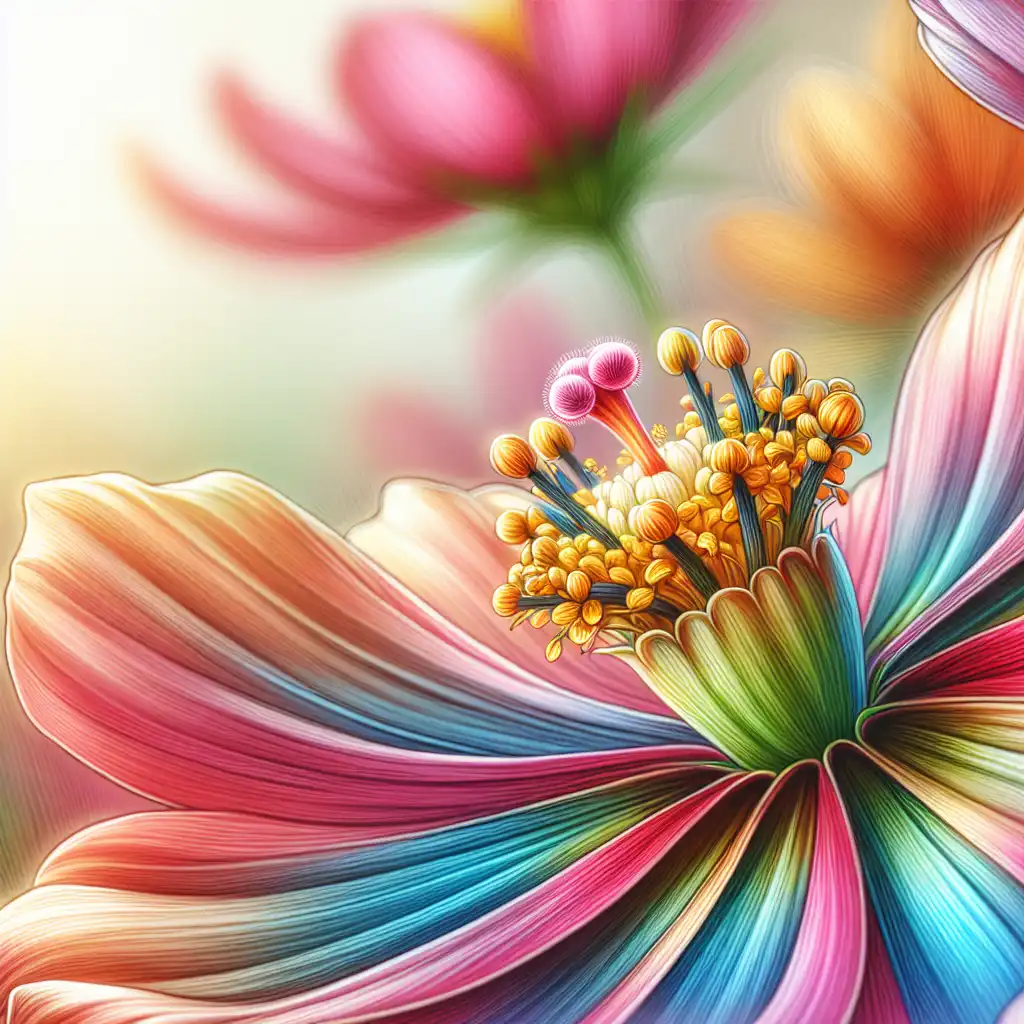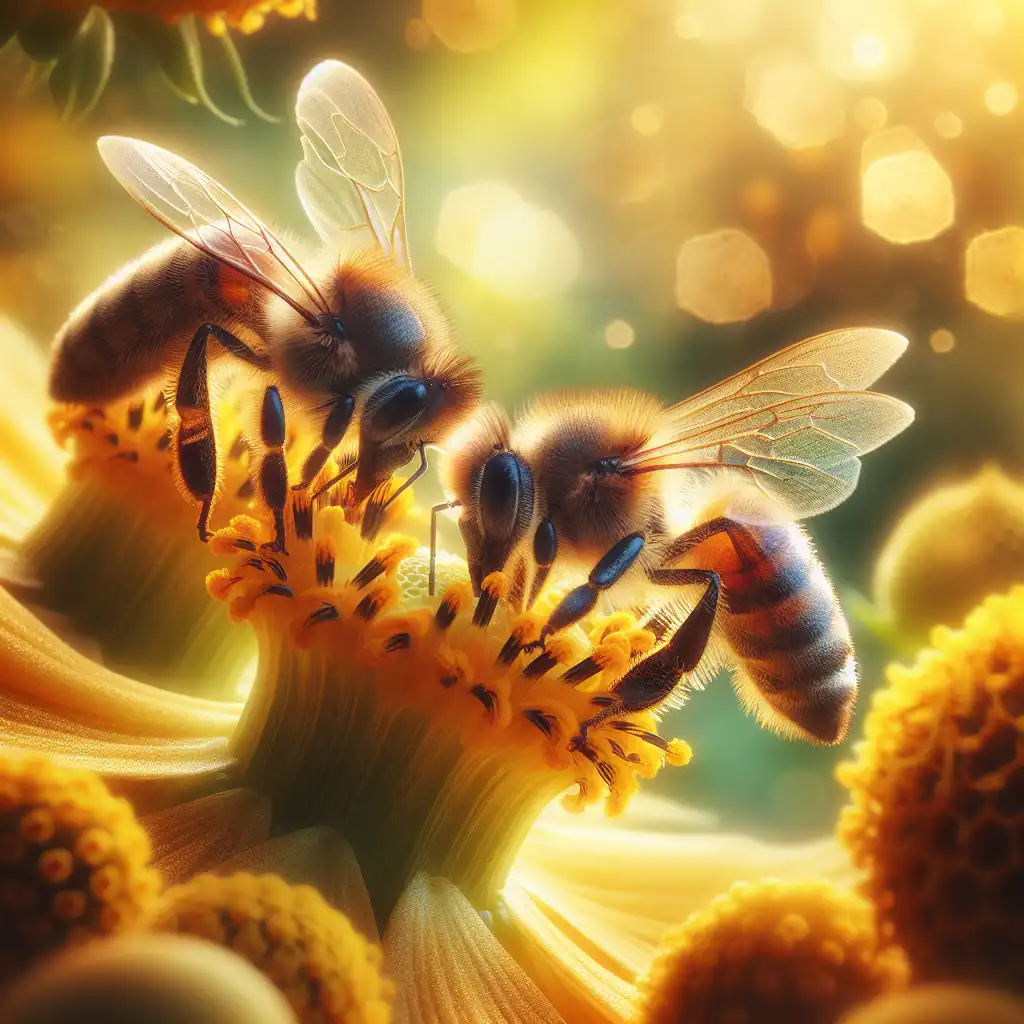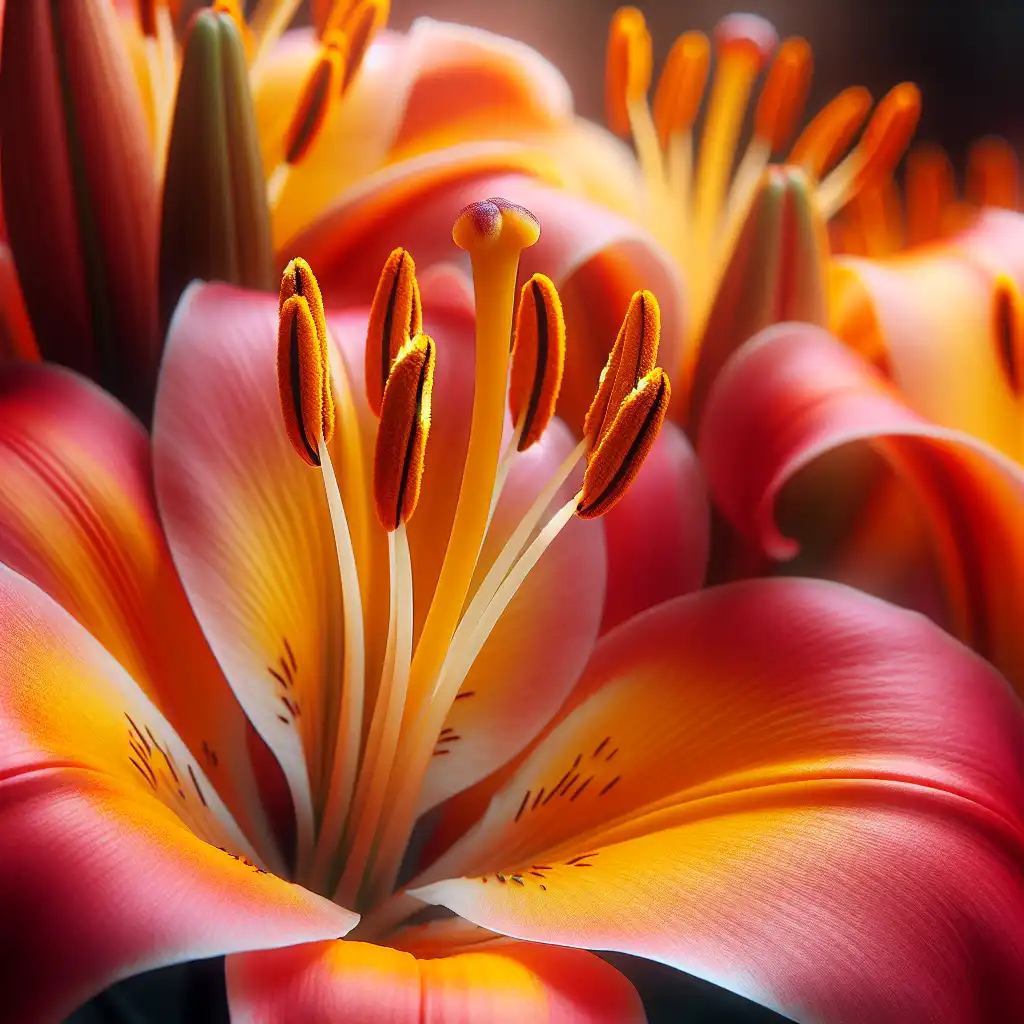
Anther
Parts Connection
An anther is part of the stamen, which is the male reproductive structure of a flower.  When studying the stamen, note how the anther sits at the top.
When studying the stamen, note how the anther sits at the top.
Pollination Role
An anther's main function is to produce pollen that fertilizes ovules of flowers or is spread by pollinators.  Bees gather pollen from the anther, helping flowers pollinate.
Bees gather pollen from the anther, helping flowers pollinate.
Physical Appearance
Anthers are often yellow and dusty due to the pollen they contain.  The anther of these lilies is particularly prominent and yellow.
The anther of these lilies is particularly prominent and yellow.